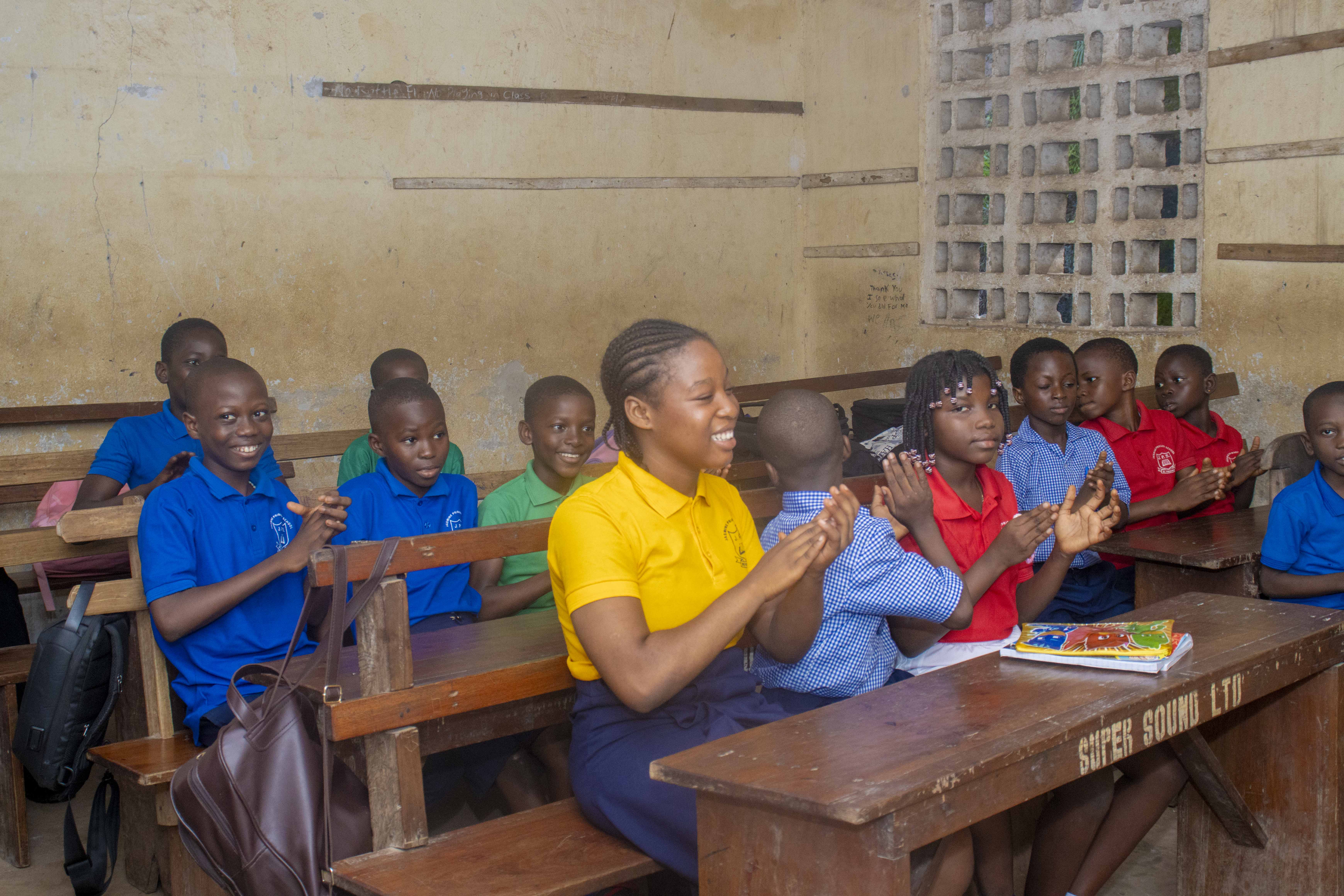Empowering youth through disaster risk management
October 14, 2024

Musa Augustine Turay, Principal of Jasmine Primary School in Crab Town teaching a class on Disaster Risk Management
In a country frequently impacted by floods, landslides, and storms, UNDP Sierra Leone is implementing an initiative to educate school-aged children and teachers on disaster risk reduction in partnership with National Disaster Management Agency . Through targeted training, children are learning about various types of disasters, their causes, and prevention strategies, equipping them to build resilient communities and save lives.
Jasmine Primary School in Crab Town is one such school benefiting from this initiative. Located near a landfill and prone to annual flooding, the students are no strangers to disasters. During a Disaster School Club meeting, the children could easily identify the threats their community faces.
The school, like many others, uses a School Disaster Risk Reduction Teaching Guide to raise awareness . A key feature of this programme is the establishment of Disaster School Clubs, which empower students to take proactive steps in reducing disaster risks in their communities. These clubs not only foster awareness but also encourage action by enabling children to respond effectively to early warnings and hazards.
Through creative activities like school plays, and quiz competitions, students are actively engaged in disaster preparedness.

Disaster School Club Mmebers of the Jasmine Primary School in Crab Town
UNDP Sierra Leone’s Programme Officer, for Disaster Risk Resilience, Margarette Dauda, highlighted the importance of these efforts, "Disaster risk reduction education is crucial for saving lives and reducing damage. By empowering children and teachers, we are building resilient communities."
The guide covers both natural disasters -like floods, mud and landslides, fire and windstorm and earthquakes and human-induced hazards. It is designed to ensure schools can create effective prevention and response plans. Teachers also receive training to integrate these lessons into their curriculum.

Margarette Dauda , UNDP Sierra Leone’s Programme Officer, for Disaster Risk Resilience .
"This initiative is helping our students become disaster-aware and proactive," said Musa Augustine Turay, Principal of Jasmine Primary School in Crab Town.
Developed by UNDP in partnership with the National Disaster Management Agency (NDMA), the School Disaster Risk Reduction Teaching Guide is part of a broader disaster management effort in Sierra Leone.

Musa Augustine Turay, Principal of Jasmine Primary School in Crab Town.
NDMA Director of Communication, Mr. Mohamed Lamrana Bah, underscored the long-term impact of educating children on disaster risk: "If we engage them at a young age, we will make a lasting difference. By partnering with UNDP, we’re ensuring Sierra Leone’s next leaders are equipped to manage and mitigate disaster risks. We’ve trained teachers in all disaster-prone districts."

Mr. Mohamed Lamrana Bah, NDMA Director of Communication
Bob Jones, National Chairperson of Community Disaster Management Committees, stressed the importance of inclusivity: "We involve school clubs in our community awareness programs because they represent the next generation. Disaster risk management should be inclusive to ensure no one is left behind."
Through education and community engagement, Sierra Leone is building a generation of resilient leaders ready to tackle disaster risks head-on.

Pupils of Jasmine Primary School Disaster Club in Crab Town.

 Locations
Locations



